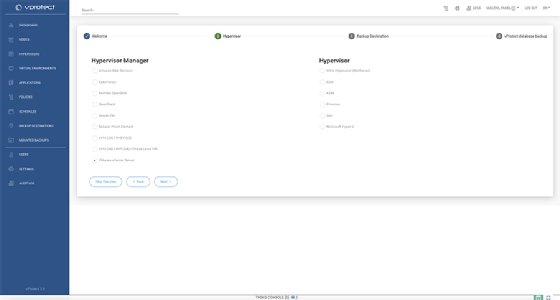
kalafoto - stock.adobe.com
Container backup grows, following container adoption
Although demand for container backup remains low, vendors anticipate growth in this area. Containers have shifted from being lightweight throwaways to persistent mini-VMs.
The popularity of container deployments is reaching a tipping point where all backup vendors will eventually need to be able to support them, industry experts said.
As container technology adoption increases, the need for container backup grows. Until now, most containers have been stateless and required no backup.
"We're going to be seeing more stateful containers, buoyed by the fact that now there's ways to protect them," said Steven Hill, senior analyst at 451 Research.
Tom Barton, CEO of container storage vendor Diamanti, said he is seeing more customers' containers with persistent storage. Barton said when containers replace virtual machines, they require the same data protection and disaster recovery (DR) requirements.
"I think containers will generally displace VMs in the long-run," Barton said.
Diamanti recently launched the beta version of its Spektra platform, a Kubernetes management layer designed for migrating Kubernetes workloads between on premises and cloud. Spektra enables high availability and DR for Kubernetes workloads, and Barton said Diamanti and its competitors partner with data protection vendors to provide container backup.
Other products that offer container backup include Veritas NetBackup, which introduced its Docker container support at the beginning of this year, and IBM Spectrum Protect, which has recently entered this space by rolling out snapshotting for Kubernetes users.
Hill shared similar beliefs about containers replacing VMs but stressed it will not be a one-for-one replacement. He said economics will always play a role. He said some applications and workloads will remain that make sense to keep on VMs while others will belong on containers. The situation will vary between organizations, but it won't be fair to say containers are strictly better than VMs, or vice versa.

"You never do everything with just the one tool," Hill said.
Hill also stressed that containers themselves aren't a mature market or technology yet, and vendors are still waiting to see how organizations are using them. Customers putting mission-critical applications on containers have nudged demand for data protection, backup, recovery, availability and failover -- the same kind of capabilities expected in any environment. Vendors are responding to this demand, but the tools aren't ready yet.
"Protecting stateful containers is still relatively new. The numbers aren't there to define a real market," Hill said.
Marc Staimer, president of Dragon Slayer Consulting, said containers still lack the security, flexibility and resilience of VMs. He chalks that up to containers' lack of maturity. As customers put containers into production, they will realize the technology's shortcomings, and vendors will develop products and features to address those problems. Staimer said the industry has recently reached a tipping point where there's enough container adoption to catch vendor interest.
Staimer acknowledged that when containers mature to the same point where hypervisors are now, there will be widespread replacement. Like Hill, he does not expect it to be a wholesale replacement.
"We like to believe these things are winner-takes-all, but they're not," Staimer said. "In tech, nothing goes away."
Staimer said from a technical standpoint, container backup has unique problems that differentiate it from traditional server, VM and SaaS application backup. The core problem is that containers don't have APIs to allow for backup software to take a snapshot of the state of the container. Most backup vendors install agents in containers to scan and capture what it needs to build a recoverable snapshot. This takes time and resources, which goes against the intent of containers being lightweight VMs.
Trilio CEO David Safaii said installing agents in containers also create extra hassle for developers because they have to go through an IT admin to conduct their backups. He said there's a "civil war" between IT managers and DevOps. IT managers need to worry about data protection, security and compliance. These are all important and necessary measures, but they can get in the way of DevOps's philosophy of continuous and agile development.
Trilio recently launched the beta program for its TrilioVault for Kubernetes, which is an agentless container backup offering. Asigra similarly performs container backup without using agents, as does Poland-based Storware's vProtect.
Storware vProtect started in the container backup space by focusing on open platforms first, protecting Red Hat OpenShift and Kubernetes projects. Storware CTO Paweł Mączka said no one asked for container data protection in the early days because container workloads were microservices and applications.
Mączka saw customers now use containers as they would VMs. DevOps now put databases in containers, shifting them from stateless to stateful. However, Mączka doesn't see containers taking over and proliferating to the same point as hypervisors such as VMware vSphere and Microsoft Hyper-V, which vProtect only started supporting in its latest version 3.9 update.
"I don't think they'll rule the world, but it's important to have the [container backup] feature," Mączka said.







